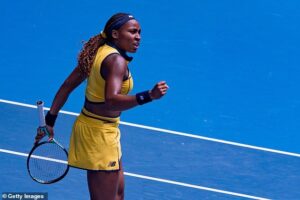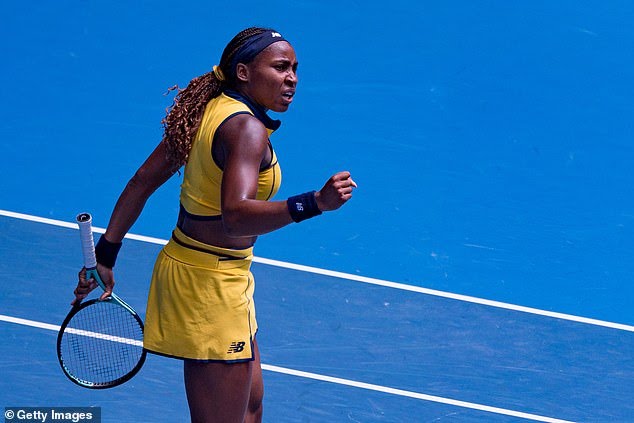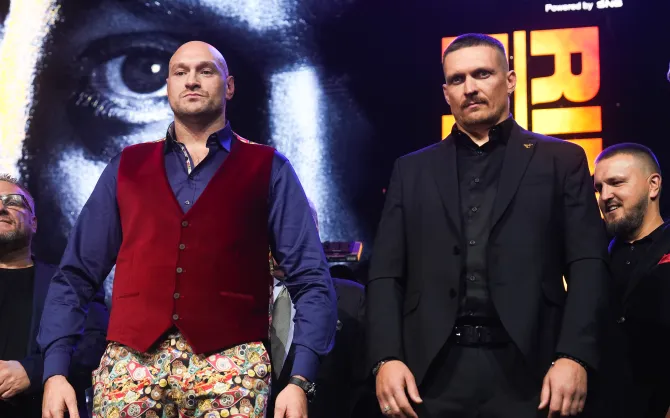Aryna Sabalenka give reason Why Coco Gauff is so tough to face – she is the best opponent ever
First, some numbers.
Coco Gauff is 34-4 since she got a tough draw at Wimbledon and lost in the first round to 2020 Australian Open champion Sofia Kenin.

She had a 16-match win streak from the middle of August to early October.
She is undefeated in 2024, a perfect 10-0, winning 20 of 22 sets.
She played her worst match in aeons in the quarterfinals at the Australian Open on Tuesday against Marta Kostyuk, double-faulting nine times and allowing Kostyuk to break her serve seven times. And she still won.
All of this qualifies Gauff as “tough to beat”.
She is one the biggest stars in women’s tennis and arguably its best athlete. She grew up in Florida playing basketball and running track. Her father had her tossing footballs to build up her shoulder strength. She does not quit.
But why? What makes solving Gauff so difficult? What are her superpowers?
We asked some of the people who know best and Gauff herself.There is a saying in tennis that strokes can be erratic but legs never go into a slump. Gauff certainly has that going for her. Her forehand can be unreliable. Her serve is prone to shakiness. She’s still a teenager. But she is the Energizer Bunny of women’s tennis.
“She’s moving really well,” says world No 2 Aryna Sabalenka, who has a 2-4 record against Gauff. “Everything you do on court, it’s coming back. You need to build the point, probably a couple of times in one point, to have that, not easy shot, but, yeah, easy shot, to finish the point.”Laura Robson, the former pro and now television commentator, calls Gauff the best mover in women’s tennis.
“She’s so explosive,” Robson says.
Gauff doesn’t disagree.
Asked for a list of her strengths, this is how she started: “Definitely my movement.”
With a powerful serve and a solid return, Gauff has won 60 percent of the points at this tournament that last less than five shots, but as a point goes on and becomes a running race, her drop-off isn’t all that steep despite that shaky forehand. She wins 56 percent of those between five and eight shots, and 54 percent when the point lasts more than nine shotsGauff has the fastest serve in this tournament so far, at 123.7mph (199kmh). She said she didn’t realize how hard she served until she started on the tour at 15 and saw the speed clock on the scoreboard hitting the 120s. Other women didn’t do that. She was impressed.
“When my serve is on, I think my serve is a big weapon for me,” she says.This may be one of the more overlooked parts of Gauff’s game.
A student of the sport always on the lookout for an edge, Gauff has spent a lot of time watching videos of Novak Djokovic, arguably the greatest returner ever. She said she has tried to emulate his shorter return stroke and use the power of her opponents’ serves against them, rather than generating power on her own.
That is what she did for years as a junior, stepping into the court and ripping. Over the years, she’s learned that isn’t necessary or effective against better serves from grown women.
Better get your first serve in against her — otherwise, she wins 64 percent of the points.When it’s working, the serve is hard and deep. Kostyuk calls Gauff’s serve “tricky”.
“Great serve,” the world No 50 Linda Noskova, who is 0-2 against Gauff, answers immediately when asked about her strengths.There are no real metrics for mental strength, but you know it when you see it; or, in Gauff’s case, when you feel it.
“That’s gotten me through a lot of matches,” she says. “I feel like, mentally, I’m one of the strongest out there and I try my best to reset after each point.”
Casey Dellacqua, the Australian commentator and 2011 French Open mixed doubles champion, backs that thinking, saying it is what makes the difference for Gauff.
“It’s her competitiveness, her composure and her refusal to leave the court,” she says. “We saw that in the quarterfinals, even when she wasn’t playing that well. When you’re a Grand Slam champion, you have that X factor. She has that.”Gauff would hit backhands all day if she could. She can fire it down the line or crosscourt. She can float it softly to thread a needle or whip it running into the court after a dying drop shot.
“Backhand, obviously, is her strength,” Kostyuk says. “It’s good. It’s really good. She’s not missing much from the backhand. And you really need to pick a shot. You really need to pick which shot you’re going to play there because it has to be sharp and it has to be different.”






